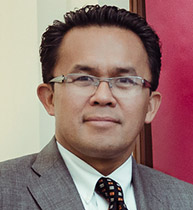SUMMARY
This is AI generated summarization, which may have errors. For context, always refer to the full article.
 I once interviewed the late Sandiganbayan Justice Francis Garchitorena. I asked him why the anti-corruption court has not been able to convict even a single high-ranking official for corruption. “I do want to hang these criminals,” he said, “but the Ombudsman has got to give me rope.”
I once interviewed the late Sandiganbayan Justice Francis Garchitorena. I asked him why the anti-corruption court has not been able to convict even a single high-ranking official for corruption. “I do want to hang these criminals,” he said, “but the Ombudsman has got to give me rope.”
When I had the chance to ask former Ombudsman Simeon Marcelo about the matter, his sad answer stunned me and stuns me still: “fighting corruption in the Philippines is like trying to kill an elephant with a flyswatter.”
In recent weeks, social movements have mobilized public rallies across the Philippines in outrage over reports of staggering legislative corruption. Based on state auditors’ findings, senators and congressmen have channelled millions of dollars of development funds to bogus non-governmental organizations (NGOs) in exchange for kickbacks of up to 50% of project costs. The balance was reportedly stashed by the founders of the fake NGOs. Only token disbursements went to project delivery if at all.
If proven, this situation is pure “state capture:” private interests working hand-in-glove with corrupt legislative and executive officials to plunder public funds. Filipinos are right to rage and rally. But there must be more than sound and fury. Fighting corruption of this magnitude requires formidable anti-corruption agencies. And the Philippines unfortunately does not have them.
The Ombudsman and Sandiganbayan are not built for the task. They need to be rebuilt if they are to have a fighting chance of excising the cancer of corruption. In this regard, the Philippines could learn from Indonesia, whose history of corruption until recently has been no different.
The following four areas of reforms are critical.
First: the Ombudsman needs strong powers of investigation. At present it is among the weakest anti-corruption agencies in the world. It cannot examine bank accounts. It cannot intercept communications or conduct wiretaps. It cannot impose travel bans or freeze assets. It cannot even make arrests.
In short, it has the mandate to investigate but none of the means. Now consider Indonesia’s anti-corruption commission (the KPK): it has all the above powers the Ombudsman lacks. Is it any surprise then that the KPK can gather compelling evidence to produce a 100% conviction rate?
Second: the Ombudsman needs authority to prosecute members of Congress. Since its founding, corruption for Congress is virtually zero-risk. No senator or congressman has ever been jailed for corruption. The reason is simple: members of Congress may be investigated by the Ombudsman, but by law the Ombudsman cannot prosecute them. So why bother to investigate?
When the Office of the Ombudsman was created in 1988, Congress made sure prosecutorial coverage exempted them. Contrast this with Indonesia’s KPK. Prior to KPK’s creation in 2002, Indonesia’s legislators also enjoyed risk-free corruption. Today, corruption is extremely high-risk as KPK has sent to jail each and every single MP it has prosecuted (65 parliamentarians and counting).
Third: the Ombudsman needs fiscal autonomy to attract the best investigators and prosecutors. While it has some very competent and committed staff, the Ombudsman cannot compete with the private sector. After all, who wants a stressful job of investigating and prosecuting powerful people for substandard pay in an ill-equipped office?
Contrast this with Indonesia’s KPK, which attracts on average over three hundred applicants for each vacancy. Where can you find a public sector agency with an acceptance rate of under 1 percent? This selectivity has been a key to KPK’s success. With only half the staff of the Ombudsman, the KPK has a record that the Ombudsman can only dream about.
Fourth: the Sandiganbayan needs to be expanded so it can speedily conduct trials. To date, the median duration of its corruption trials exceeds 6 years. If you add the 3 years that it takes to complete an appeal, then the duration exceeds 9 years!
Now contrast this with the KPK’s record: all the cases it has prosecuted have been completed in less than 6 months, including those appealed to the Supreme Court. At the rate it has been going, KPK has jailed 3 high-ranking officials every single month. Nothing less than a revolution in governance is underway in Indonesia. If you are being indicted by the KPK, a line in Jakarta goes, you must already start packing for prison.
In sum, unless the Ombudsman and Sandiganbayan are reformed, Filipinos cannot expect progress in the fight against corruption. It is simply wishful thinking to expect these institutions to be effective as they are. Indonesia’s experience is a model to consider.
Give the Ombudsman and the Sandiganbayan more than just flyswatters to fight corruption, for only then can they effectively fight corruption. – Rappler.com
The author is Deputy Executive Director and Professor of Public Policy & Management at Carnegie Mellon University Australia. The views and opinions expressed in this article are solely those of the author and do not necessarily reflect the perspectives of the university.
Add a comment
How does this make you feel?
There are no comments yet. Add your comment to start the conversation.